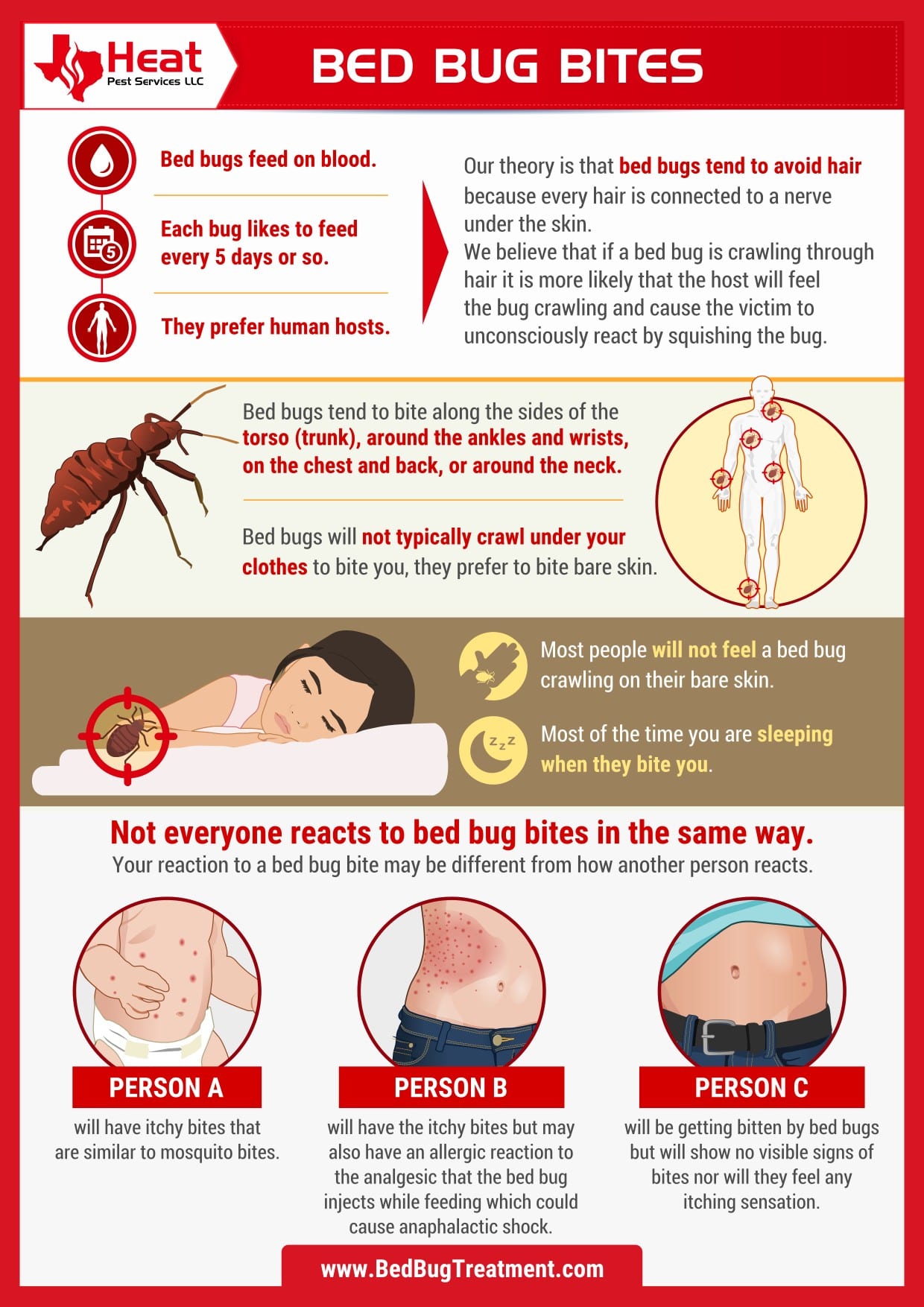Bed bug bites
Having bed bugs bites
When you’re unwinding on your chair, couch, or bed, you may not realize that bed bugs are on the hunt for a blood meal. After they’re done feeding, they retreat to digest and lay eggs, sometimes leaving a small bloodstain on bed linens or clothes.
Bed bugs are sneaky, injecting an analgesic substance during feeding that usually goes unnoticed. They also use an anticoagulant to prevent the blood from clotting, causing the bites to appear in groups and resembling mosquito bites. But don’t jump to conclusions based solely on the bites, since mosquito bites can look similar.
People can have different reactions to bed bug bites, with some experiencing allergic reactions that result in redness and swelling. In extreme cases, anaphylaxis can occur. Though bed bug bites are generally harmless, their presence can cause anxiety, insomnia, and paranoia.
If you’re seeing a pattern of bites week after week and mosquitoes aren’t the culprit, it’s possible that bed bugs are the source. Even if you don’t see any bed bugs, they may still be present. Luckily, we can help with inspections and show you how to spot bed bugs yourself. Don’t hesitate to contact us if you’re being bitten by something you can’t identify.
Probably the worst part about having bed bugs is the fact they they are biting you and feeding on your blood. Having bed bugs literally sucks.
The bed bug climbs onto you while you are resting or sleeping. They pierce your skin without you feeling it. After they are done feeding they hide somewhere in a nearby crack or seam to digest and lay eggs.
Bed bugs usually bite in less hairy parts or the body. Most often they will bite the hands, arms, neck, chest, stomach, ankles, and feet.
Everyone reacts differently to bed bug bites. Some people will show little sign of being bitten. Others will show groups of raised red itchy bite marks.
